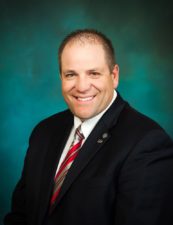Utah Farmer: ‘Not Once’ Has an American Applied to Milk My Cows
Date: April 24, 2017
In November 2016, shortly after the presidential election, Ron Gibson had to reduce his Utah dairy farm’s milking schedule from four times a day to three times a day. There weren’t enough people on staff to do the work, as many immigrant laborers had disappeared from the area after the election.

“The labor force just got spooked,” says Gibson, a fifth-generation farmer at Gibson’s Green Acres in Ogden, Utah, and the president of the Utah Farm Bureau. With a 3.2 percent unemployment rate in the state at the time, staffing was already a challenge. “It’s hard anyway to find workers. We didn’t know every day if we were going to have people here at the farm.” Gibson is hardly alone. Across the country, American farms are facing significant labor shortages as the number of new immigrants coming to the United States for agricultural work has dropped by 75 percent in recent years.
Currently, Gibson’s Green Acres employs about 30 people. Twenty-five of those employees work full time, and 22 are immigrants. The rest are high school students who work seasonally. The farm milks 1,500 dairy cows and grows corn and alfalfa on more than 1,500 acres.
Reducing the milking frequency has had a serious financial impact on Gibson’s farm, which now produces four fewer pounds of milk per cow per day. That’s a loss of 2.19 million pounds per year. “That’s a big deal for us. That’s our profit,” he says.
We will import our labor, or we will import our food. Those are the two choices.
That loss impacts the wider community as well. The immigrants on his farm don’t take jobs from Americans, he says. They help create jobs: for the workers who manufacture machinery and deliver fuel; the feed growers and veterinarians; the truck drivers and repairmen; the people who process cheese and yogurt; the people who deliver the cheese and yogurt to stores; and many more. It’s called the multiplier effect, and, on average, Utah dairy farms have a multiplier effect that’s nearly three times their annual sales. That means that Gibson’s farm, which records annual sales of $7 million to $10 million, generates as much as $30 million of economic activity for his region. But Gibson wouldn’t have those sales today without immigrant labor.
Because without immigrants to care for, and milk, the cows, Gibson is stuck. He’s lived on the farm his entire life and has never had a single U.S.-born worker ask him for a job milking cows. “Not once,” he says.In addition, many of the immigrants he employs have highly skilled jobs and decades of experience. “You can’t just place a person with a flock of sheep or herd of cows. These are very professional, talented people,” he says.
The dietician who mixes the feed for Gibson’s Green Acres, for example, has 20 years of training. “I don’t even know what I’d do to replace him,” Gibson says. The farm’s herdsman knows every cow by sight. “He is irreplaceable,” Gibson says. And the immigrant who takes care of the farm’s baby cows is keeping the future of the farm alive. “I can’t just pull someone off the street who just finished a construction job or got laid off from the computer store,” Gibson says. “You have to know what you’re doing to take care of baby calves, or they will die.”
Gibson still hasn’t found replacements for the workers he lost in November 2016. “There was a time when we had [immigrants] coming all the time looking for work,” he says. But now they are just too scared.
Gibson believes the country needs a sensible immigration system that will enable farms like his to continue to produce food on American soil. “We need to secure our border. We need to know who comes, and we need to know who goes. And we also need to have the ability to bring in workers to help us,” he says.
Dairy and agricultural associations have for years called for immigration reform that would allow farmers to hire foreign workers year-round. The H-2A visa, the only existing agricultural guest worker program, allows U.S. employers to hire foreign help for seasonal labor only, something that does not fulfill the year-round needs of dairy farmers.
Nonetheless, 80 percent of the country’s milk is produced on farms that employ — and depend upon — foreign-born labor, and immigrants comprise about half of all workers on U.S. dairy farms, according to the National Milk Producers Federation. The trade group estimates that without foreign-born workers, one in six dairy farms in the United States would not have the labor necessary to remain in business and would close, costing the country $32.1 billion in lost economic output and the loss of more than 200,000 other jobs, most of which are held by U.S.-born workers.
Gibson, for one, believes that without foreign-born workers the entire U.S. agriculture industry would collapse. And when we start getting our meat, produce, and dairy products from countries that lack consumer protections, we’re gambling with our safety and health. “We will import our labor, or we will import our food,” he says. “Those are the two choices.”
